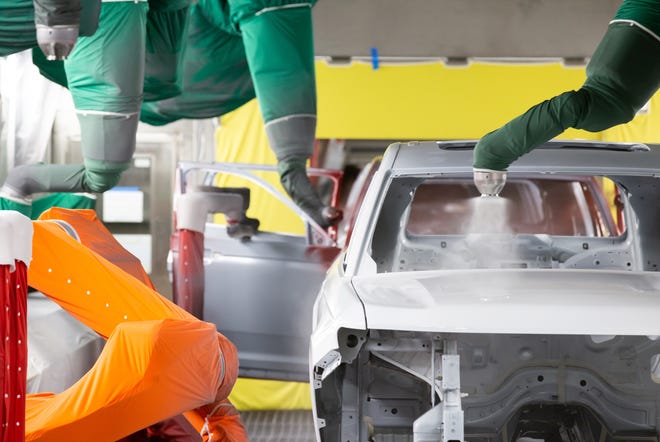The maker of Jeep SUVs says it will install more emissions controls at its new plant in Detroit after an analysis by a third-party engineering found a high frequency of odor concentrations coming from the plant making Grand Cherokees.
Timing on how soon these mitigation efforts can take place will depend on discussions with the state of Michigan regarding permitting requirements and deadlines imposed through the enforcement process, Stellantis NV said. But they should help to ensure that its operations don’t result in “objectionable odors,” according to the report.

Filed by Stellantis on Friday, the report comes after the transatlantic automaker was hit with multiple violations by the Michigan Department of Environment, Great Lakes and Energy for odors coming from Mack Assembly Plant in Detroit and for missing emissions controls required by air-quality permits in one section of the paint shops at Mack and the Warren Truck Assembly Plant. The automaker says the odors don’t present a health risk to residents in the area.
Stellantis last month installed the missing ducting at Mack on Detroit’s east side and says it will have done so at Warren by February. The state department in November, however, escalated enforcement against the automaker, implementing a control plan and saying the company will be fined, though it hasn’t specified how much. A community meeting is being planned for later in the month to share an update on EGLE’s investigation.
But even since the ducting was installed, neighbors say smells persist: “Out of a four, I would give it a two and a half with a four being the worst I ever smelled,” Robert Shobe, 59, said of odors in the weeks since the ducting was installed. Shobe, whose backyard now looks upon the new paint shop of the expanded Mack plant, has been an outspoken critic of the company’s expansion in the neighborhood and its public relations.
In response to the initial odor violation, Stellantis NV hired RWDI AIR Inc. to take 152 odor samples from 42 potential sources in and around the Mack facility over 13 days in October and November. The data collected was used by a third-party engineering firm to create a five-year model that indicated that the frequency of occurrence of odor off site at a concentration greater than 1 unit was 7.3% of the time under a “worse case” footprint, according to the report.
Neither Michigan nor the Environmental Protection Agency has a written standard or guidance based on odor units. Stellantis used the most recent guidance from the Ontario Ministry of the Environment, Conservation and Parks in the assessment. That states odor impacts above 1 odor unit are acceptable as long as their frequency is less than 0.5% of the time.
With the odor frequency almost 7 percentage points above that, engineers looked at ways in which the frequency could be reduced to that recommended 0.5% of the time. Stellantis says the mitigation efforts should help ensure the operations don’t create objectionable odors, which EGLE defines as a three or above on its five-point odor scale. Violations against the Mack plant had put its odors at a three and four, which are moderate-to-strong smells.
In addition to the ducting installed at Mack last month that sends paint emissions to a regenerative thermal oxidizer control unit, which destroys potentially harmful pollutants, Stellantis will install a new and dedicated regenerative thermal oxidizer and ducting. The exhaust from two existing stacks will be routed to this new system to destroy compounds contributing to odors.
The company also will route the clean air exhaust from the existing concentrator to the stack of the new oxidizer. It says this will improve dispersion from increased velocity and height. The concentrator removes the compounds and accumulates them into smaller volumes to be destroyed more efficiently. Other technologies will be used to reduce in specific areas that also resulted in smells.
The EGLE has received Stellantis’ report and is reviewing the findings, spokeswoman Jill Greenberg said. If it finds the mitigation efforts sufficient, they could be included in Stellantis’ enforceable control plan. If it’s determined to be insufficient, EGLE may require more specifics.
bnoble@detroitnews.com
Twitter: @BreanaCNoble